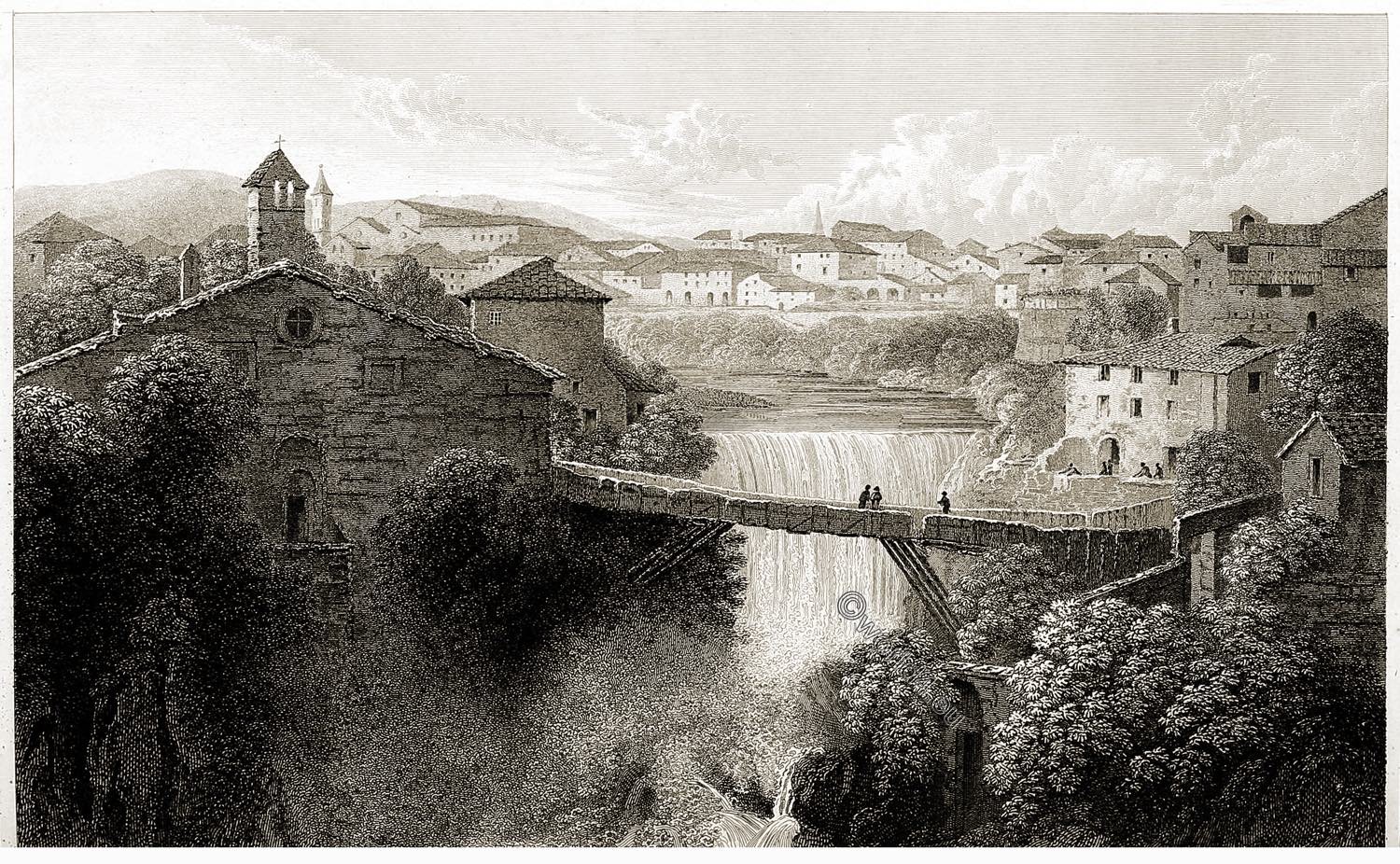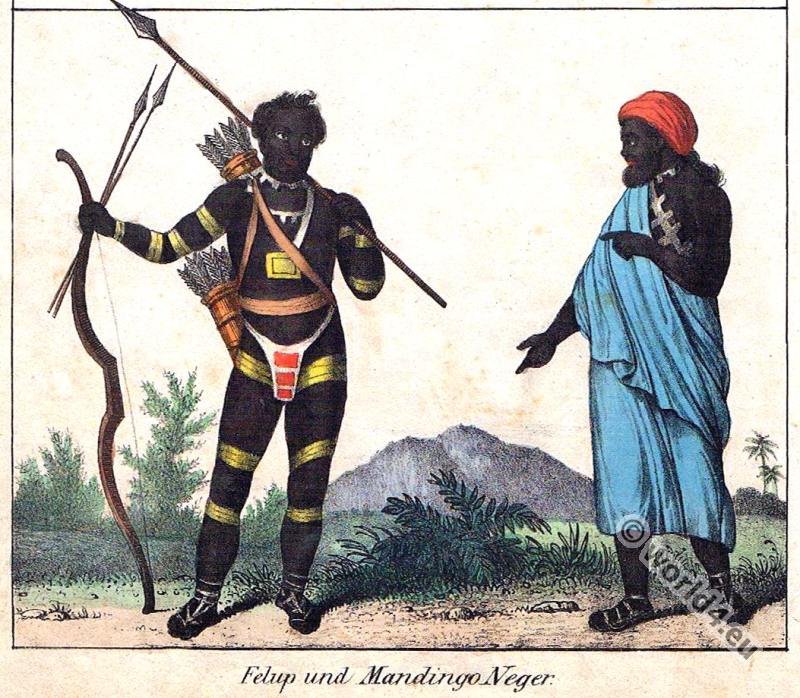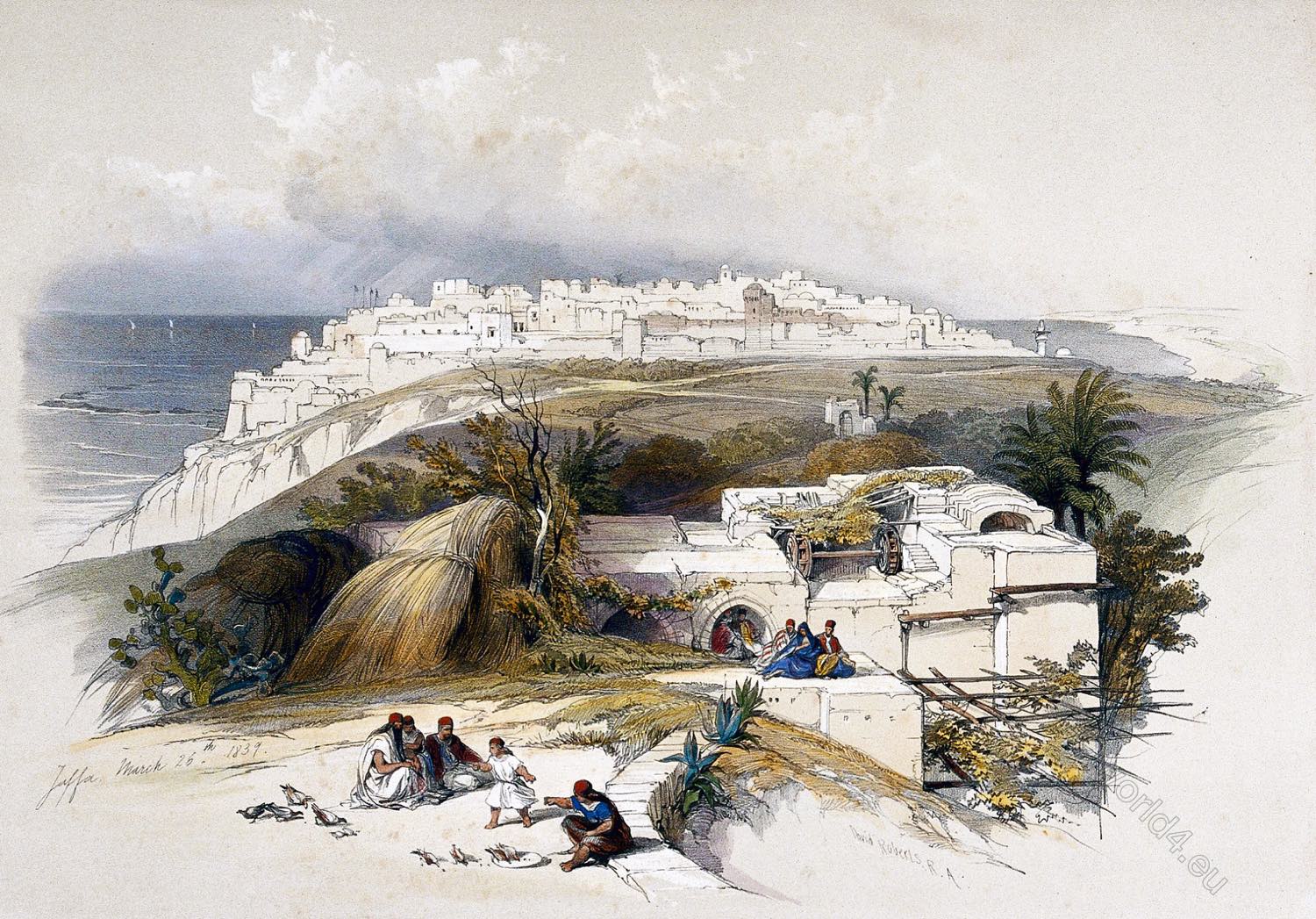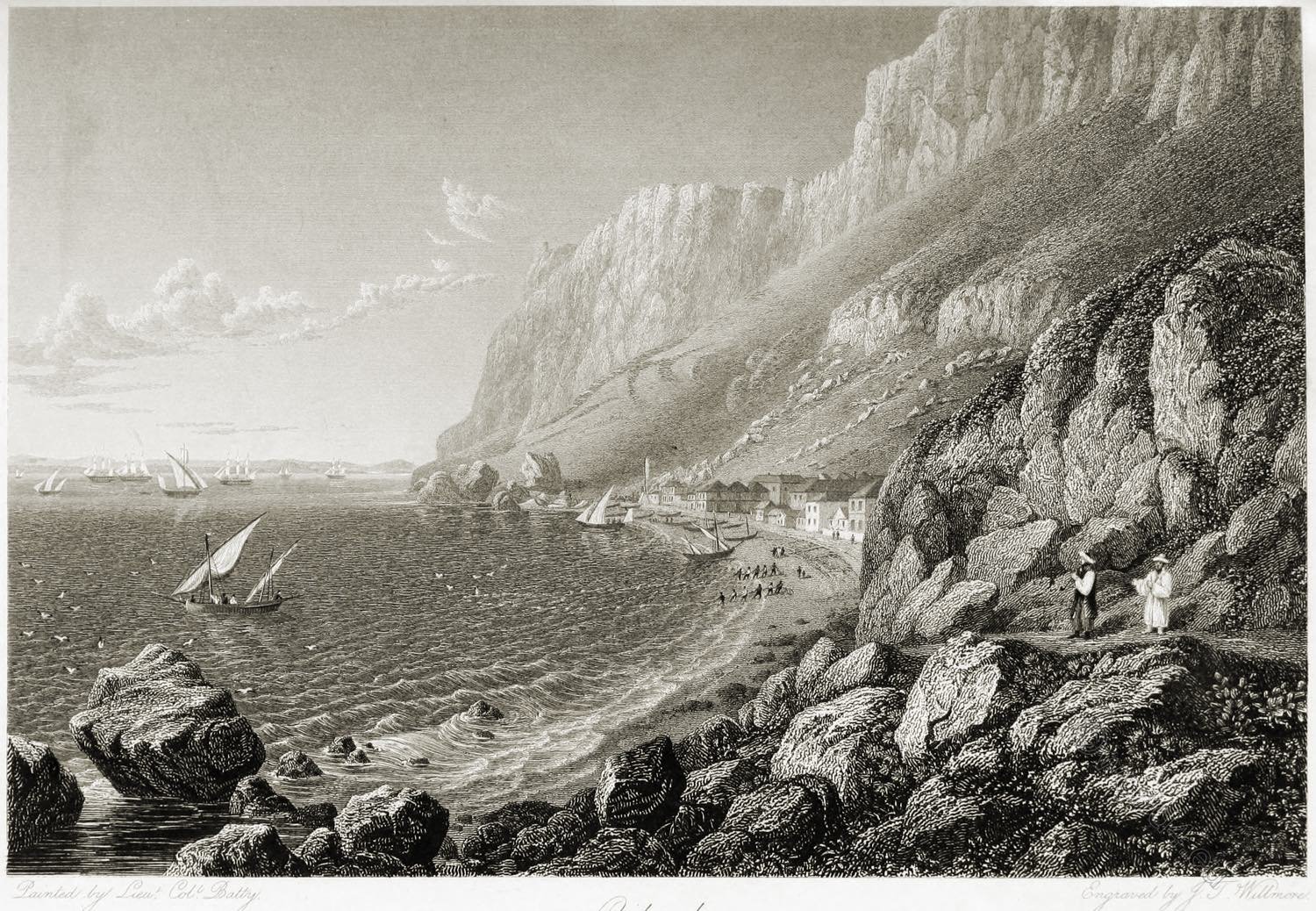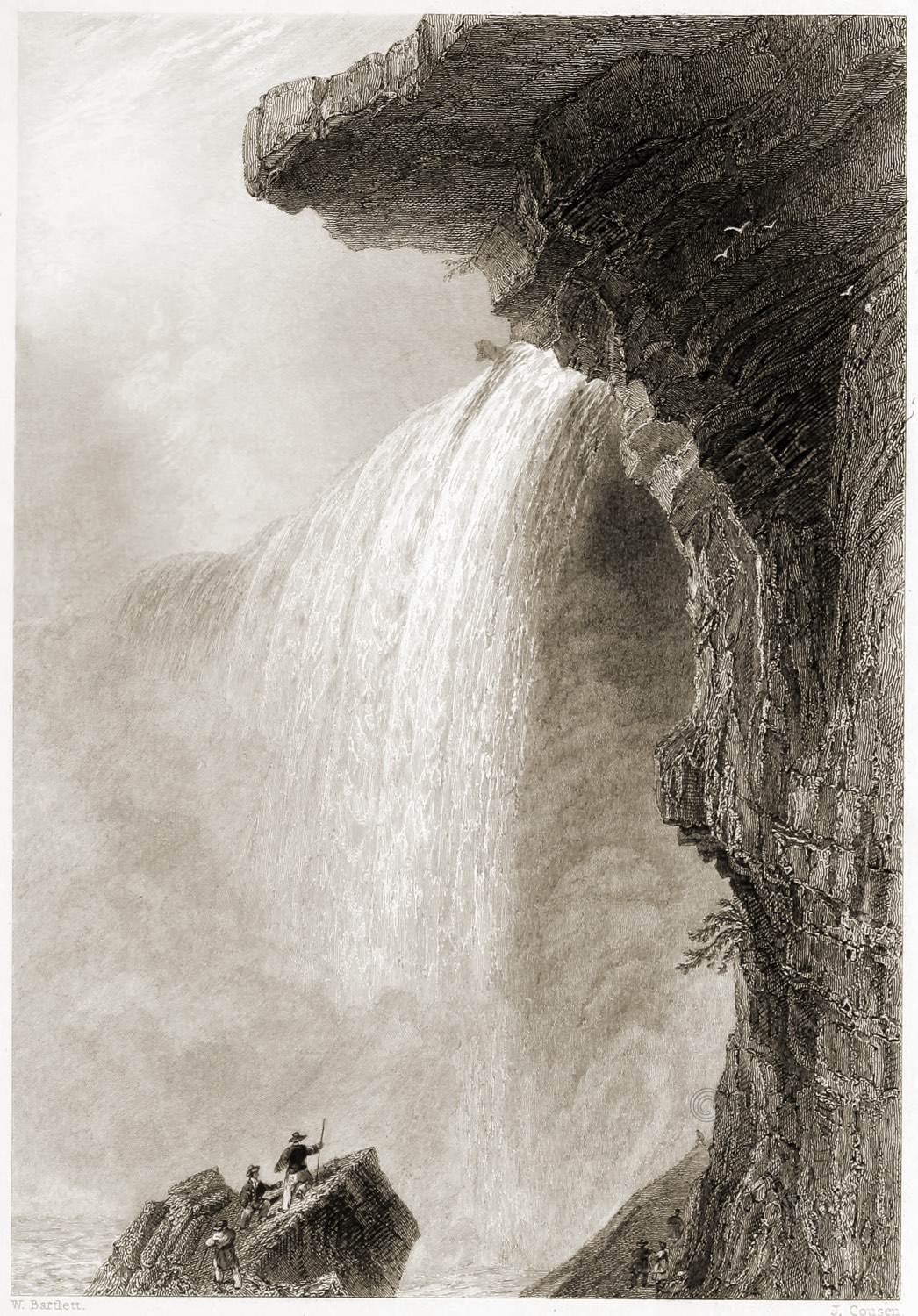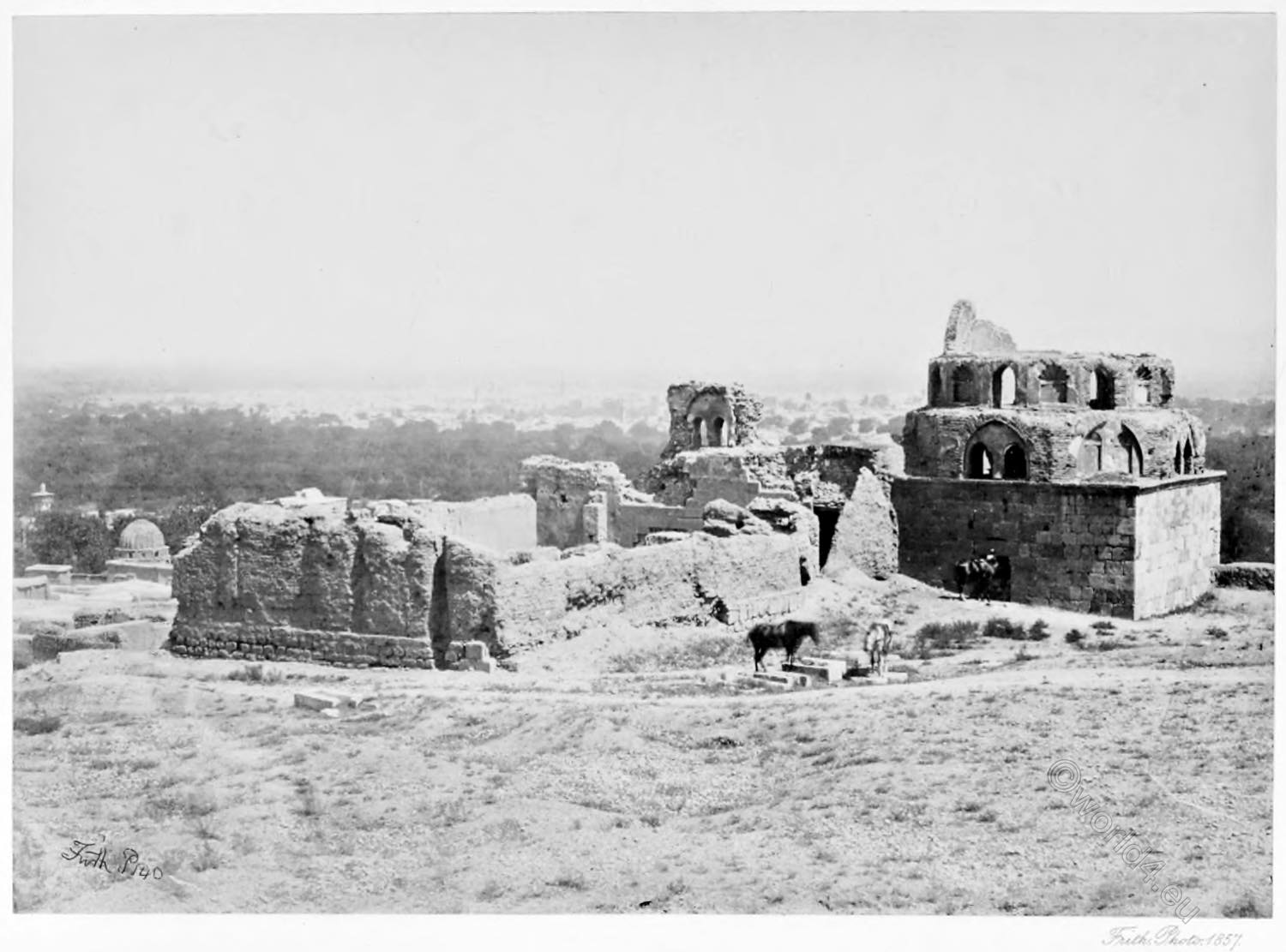
DISTANT VIEW OF DAMASCUS, FROM SALIHIYEH.
It has been stated in a previous article upon Damascus that its details are likely to disappoint the traveller, and in presenting this attempt at the celebrated view of the city and plain from the slope of Lebanon, we must qualify the disappointment of, our friends who have read the glowing descriptions of this scene given by a score of travelers, by acknowledging that the camera does very scanty justice— we might almost say does an injustice— to subjects so distant, and so minute and indistinct in their details as this is ; but had we not attempted it (though on a very rough, unfavorable day), we should, in all probability, have suffered the heavy displeasure of the critics who have read of such a scene, or possibly have even beheld it.
To the eye it is undoubtedly a magnificent view: the white buildings of the city, covering a vast area, glitter charmingly through the interminable plain of rich foliage—the elevation, shortly after the traveler leaves the village of Salihiyeh for Beyrout (Beirut, capital and largest city of Lebanon) or Baalbek, being sufficient to give him a splendid range of vision. The plain upon which Damascus stands, and which is watered chiefly by the snow-fed streams of the Barada (Abana) and A’waj (Pharpar), is of unknown extent, having been in modern times but very imperfectly explored. Mr. Porter has published some interesting information respecting its eastern tracts, whereit holds the basins of three mighty lakes, which have no outlets, but are the natural receptacles for the waters of all the rivers and fountains of the plain of Damascus; each lake is about two miles in circumference.
From the furthest point reached in this direction, Mr. Porter descried numerous mounds and other objects, which had the appearance of being the sites of ruined cities; and during the summer of last year Cyril Graham, an enterprising young traveller, who was accompanied only by his servant, reports, in the district of the Hauran, to the north and east of the lakes above named, the discovery of the sites of about eighty cities of very great apparent antiquity.
Damascus, although certainly one of the oldest inhabited sites in the world (in the days of Abraham it was already a city of note), has suffered many spoliations, and a few almost entire demolitions, from the “chances of war” very little, as we have before had occasion to remark, now remaining of great antiquity within; its walls. It has also suffered to some extent from earthquakes.
The population of Damascus is probably upwards of 150,000 souls. Silk fabrics, some of them richly interwoven with silver, are still made here; few travelers escape from Damascus without having bartered sundry pieces of good useful gold for huge flaring, long-tasseled silk handkerchiefs to wrap about their heads, and preposterous scarfs, many yards long, to wind round and round their already overheated persons. The manufacture of swords and gun-barrels, for which Damascus was for centuries so justly celebrated, has now degenerated into a state of art which would shock a Birmingham maker of seven-and-sixpenny muskets.
Source: Egypt and Palestine by Francis Frith, 1858. Publisher: London, James S. Virtue, City Road and Ivy Lane. New York: 26, John Street.
Continuing


